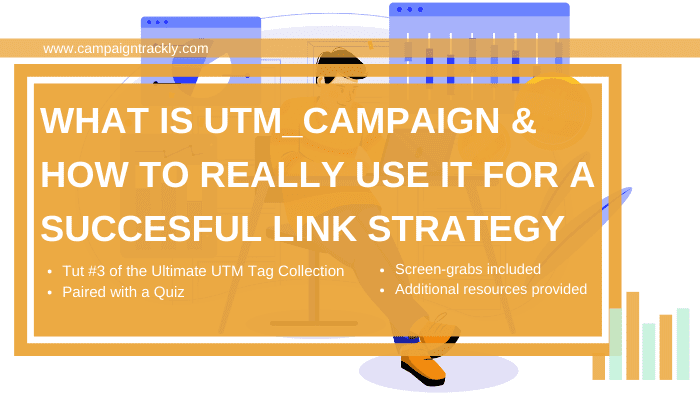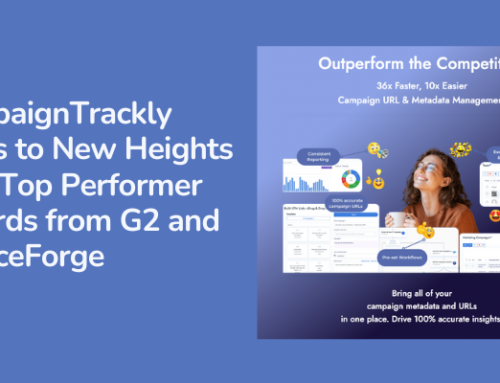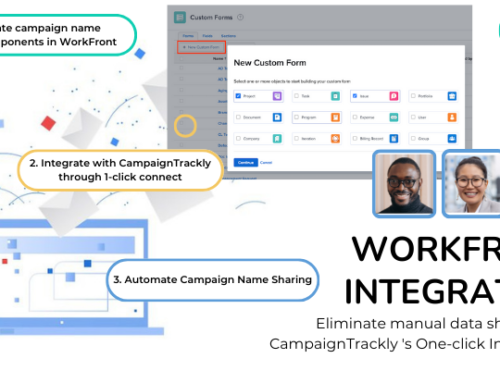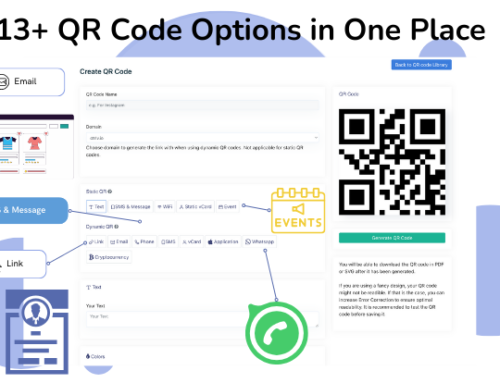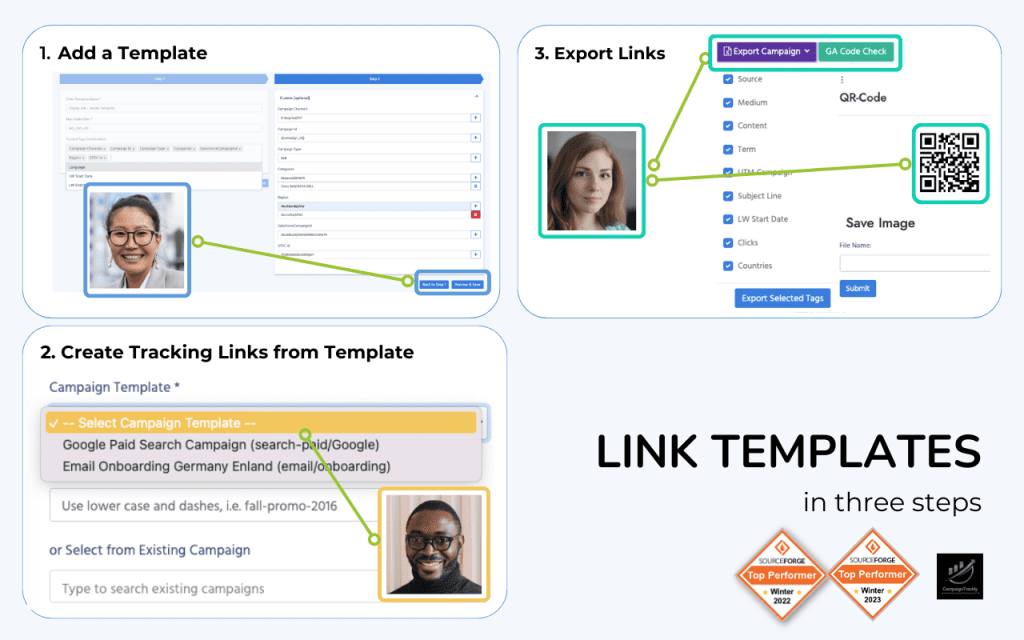In this blog, I will cover the UTM_Campaign tag and will explain how it is used for marketing and reporting purposes, and how you can leverage it in a scalable way when creating your link tracking strategy. There will be a quiz at the end.
1. What is UTM_Campaign?
UTM_Campaign is a snippet of code, which digital marketing specialists add at the end of their promotional links together with other snippets to get more granular reporting on their campaigns. The way it is added to each link without breaking it is with the help of a question mark, in the following format:
- Base link: https://www.campaigntrackly.com
- Link that has utm_campaign tracking snippet in it: https://www.campaigntrackly.com?utm_campaign=name-of-your-marketing-campaign
- Click here to see that indeed this code is not breaking my link: https://www.campaigntrackly.com?utm_campaign=name-of-your-marketing-campaign
2. Why do you need this snippet of code?
UTM_Campaign is very important because its code is used by Google Analytics to group all your trackable Marketing links in reporting buckets called Custom Campaigns (in Universal Google Analytics) under the Acquisition section of your reports or Campaigns (In GA 4) in the “All Channels” component of Google Analytics 4.
- It is a required value when you tag your marketing link and you cannot create a trackable link without it.
3. Where in Google Analytics can you find the reports that the utm campaign parameter generates?
- If you are an Universal Google Analytics user, look no further than Acquisition>Campaigns>All Campaigns. This report shows you both your custom-created utm_campaign groupings, as well as your Google Ads. Find a more detailed utm_campaign visualization example here.
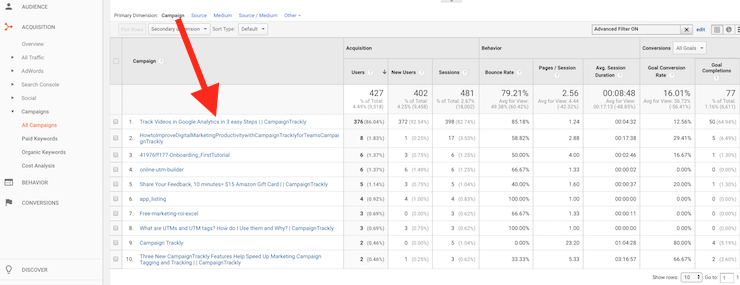
- If you have transitioned over to Google Analytics 4, one of the several places where you can find Campaign reports is in All Channels. :

You can also find the reports for your custom-tagged campaigns, in Acquisition overview, User acquisition and Traffic acquisition report sections of GA 4.
4. Why was utm_campaign devised in the first place?
Marketing teams cluster their activities in buckets called marketing campaigns. Each marketing campaign will have:
- a measurable objective
- KPI goals
- assets that will be promoted across a number of channels
- digital links associated with these assets that will be used to measure traffic that came to those links and its engagement.
Here is a simple example of an eBook marketing campaign that provides details around the marketing process. It also leaves you with a nice infographic about building an eBook campaign for your product or brand.
Since marketers engage in multiple groups of activities that feature different assets and different promotional routes, the best way to be able to understand and measure marketing efforts in a scalable and organized way is to split these activities in marketing campaigns. Read this blog to go through the steps of learning more about marketing campaigns and their ROI.
5. Are you creating utm_campaign in Google Analytics?
While your analytics platform is created with utm codes in mind and can read them to group your incoming traffic in meaningful buckets, it only reads data, it does not create it. So, you have to create your utm_campaign and other tracking snippets either:
- in an online platform that specializes in building utm tracking code and links (easiest to scale)
- using an excel spreadsheet or Google sheet (moderately scalable) or
- entering the codes manually every single time (not scalable)
5. What ways are there to build effective taxonomies around utm_campaign for an effective link tracking strategy?
No matter how you decide to build your tagging libraries and links, to have a viable link management strategy, you need to set up rules and conventions first.
If you are using our CampaignTrackly link tagging app, for example, there are several ways you and your team can enter your utm_campaign values when building your tracking links:
- Manual entry – your users can enter manually the campaign name every time they tag links, but this is risky, as different users might enter different spellings for the same campaign and you might end up with this scenario, where one Facebook campaign gets split into different buckets and your reporting is no longer accurate:
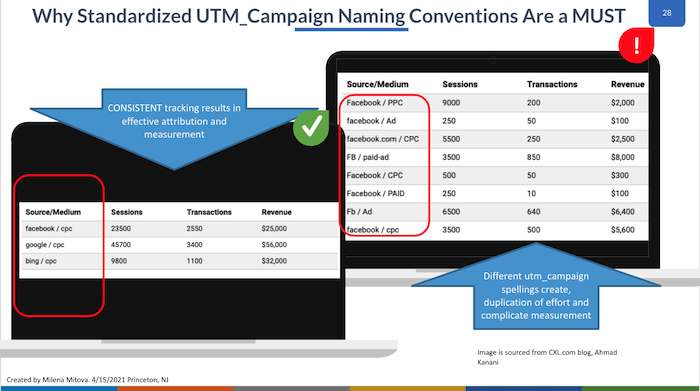
- Automatically pull from pre-populated custom tags – you and your users will be asked to populate values for one, two, or more custom tags that will carry a variety of values to select from. As an example, you might require a utm_campaign value to always have the year, month, a geographic region, country, and brand name. This setup resolves a lot of naming variation and spelling issues but will still require mutual alignment on the components of the custom tags that will concatenate to build the campaign name.
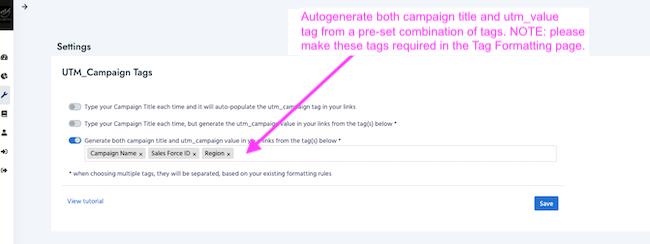
- The super-admin of the account creates all the campaigns that have been planned for the year and only allows the team to select from pre-existing campaigns without the option to create new campaigns. This set up makes it simple and easy to avoid too much variety and keeps in place a steady, limited number of master campaigns that are being implemented through the year. One caveat to consider is that you might lose sight of smaller activities within that large campaign that might have been really great performers.
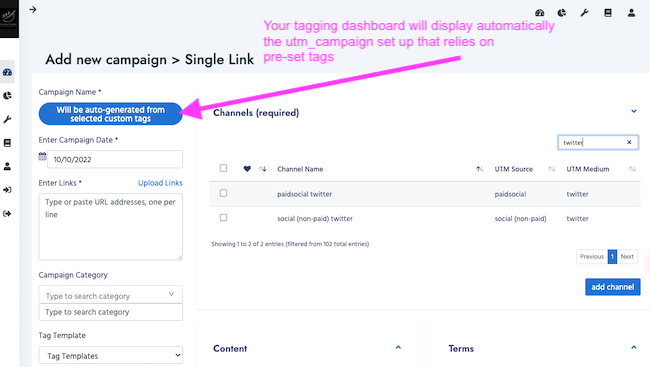
Our recommendation:
- It is great to create large roll-up reporting buckets – like region, country, master brand – and you can use the Google Analytics custom dimensions to create and track those instead of using utm_campaign.
- For utm_campaign values, set up naming conventions by channel type or campaign type and make sure your users are trained how to follow these rules.
- Your tagging platform selection is of great importance here – the easier it makes for people to follow the conventions, the more enjoyable and adoptable your process will be.
Conclusion
In this blog we covered everything you need to know about utm_campaign, how it is used, and where to find its values in Google Analytics. We also discussed that it is a mandatory utm tracking code that has to be added to every link you tag for your promotions.
We also covered naming conventions and ways to go about planning how to standardize your utm_campaign formatting to avoid errors and inaccurate reporting.
Any questions or recommendations, please do not hesitate to contact us support@campaigntrackly.com
Take the Utm_Campaign Quiz to Solidify Your Knowledge
Tags: utm_campaign, utm tracking code, utm tracking snippet, trackable links

